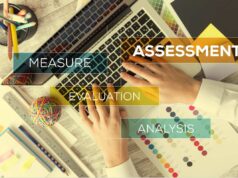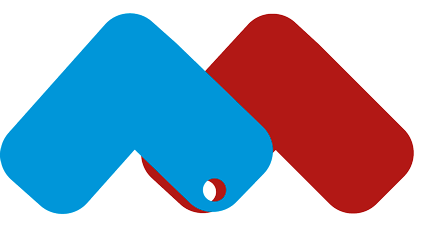If you choose to use personality tests in the recruiting process or for developmental purposes, you should know what you are doing.
At the very least you should know the limits of testing, what sort of knowledge tests provide, and be aware of the illusions associated with them. Illusions – if not looked into – may cost dearly in the long run.
The Disadvantages of Personality Tests: People are not Machines
For some leaders, personality testing provides a sense of control in hiring and developing a business. Tests offer the promise of tidying up an otherwise messy reality and present orderly charts to be used as game pieces in the larger organizing puzzle.
The sort of control that tests promise is, however, greatly overrated. In fact, as leaders outsource their intelligence and practical judgment to quantitative metrics, they very much risk foregoing the control they’re pursuing in the first place.
Personality tests do not provide objective or accurate knowledge to be applied in any part of the value chain. They are tools and very crude tools at that. Personality tests make use of categories and typologies often at odds with everyday situations and context. Moreover, they mostly do so in such a crude and oversimplifying manner that they miss the very dimensions one should be interested in when hiring and organizing. Why? Because humans are not machines, even if tests presume they are.
Personality Testing is Bad Strategizing
Personality tests would be a great idea if people were machines, as individual traits and typologies could be easily explicated, charted, and organized.
Machines are complicated not complex; they are compilations of functions and algorithms – all of which are aimed at specific ends to equally specific causes.
As much as humans exhibit algorithmic and animalistic behavior, it is not these machinelike scripts that make us human. As a species, our defining feature is that we are, at the very deepest, complex beings – always with the potential to change and mutate, making any business an unpredictable and turbulent evolutionary affair.
This is why strategy is an art form transforming wicked issues, turbulence, and ‘unk unks’ (unknown unknowns) into sensible actions. The best strategic leaders draw on courage and raw creative talent (and sometimes pure luck) to move on all opportunities, often without a certainty of success, but with strong conviction and great stamina.
_____
HAVE YOU READ: How to Lead, Manage and Motivate Knowledge Workers
Also by Professor Erlend Dehlin
_____
Arguably, many of the best strategic leaders are exemplary in picking up key signals, sensitive to input, and devoted to continuous learning from trial and failure. For these leaders, codetermination and collective learning can be valuable to ensure the highest possible quality of strategic knowledge as well as agile autonomous performance throughout the organization.
Perhaps making the wrong decision is better than making none, since strategic plans and actions can often be redirected, and mistakes form a basis for learning. Fail fast and try again, as the aphorism goes. For the boldest of leaders, losing face is less an issue than the courage to learn, listen, and try again – often without a safety net. Admitting mistakes is vital to ensure a healthy and open flow of information and effective knowledge sharing. Outsourcing one’s intelligence to oversimplified quantitative metrics, such as personality testing, seems implausible for the strategic leader.
Only if you know what your business will be like in 10 – 15 years, can you know or predict which personality types are desirable in the long term. In the case of innovative knowledge organizations, even in the short term, the strategic context is distinguished by rapid change and turbulence. Therefore, learning, improvisation, creativity, practical judgment, agility, and actionability are the sort of enduring capacities innovative businesses should develop and embellish, rather than having a hang-up on the crude psychological characteristics of individual workers.
Learning and Adaptation in the Workplace
The individual worker never stops to mature and grow as he experiences and learns from practical endeavors. He continues to develop and adapt – learns to make up for and adjust shortcomings while embellishing his talents.
At the workplace, shy people learn to interact, outgoing people learn to listen, sensitive people learn to rationalize, and brutes learn to adjust. Creative people learn the significance of structure and system, non-creative people (to the extent that they exist – therein creativity comes in different varieties and is not a dichotomous characteristic) learn to challenge their ideas and conceptions. Impulsive people learn the skill of control, just as passivity can be substituted by action. Most of us possess all these qualities to some extent, even if they may appear as a surprise under the right conditions. The precondition is that one is allowed to gain experience in new areas, to learn about oneself in different settings, as opposed to strictly working within a limited area as depicted by some job analyses or tests.
_____
HAVE YOU READ: What is Autonomy in the Workplace? 3 Common Myths about Worker Autonomy
Also by Professor Erlend Dehlin
_____
The individual worker leaves his home in the morning, as some familiar version of himself, and arrives at work as the sort of person he needs to become to get the job done. This is true for most of us. The challenge for leadership becomes less a machine-like jigsaw puzzle of plucking typologies, mixing them up, and organizing an ideal collegial assembly than an activity of developing individuals and teams, installing organizational learning structures and routines, so that when the next crisis occurs (!) the organization possesses the capacities and robustness, which transcend the individual worker.
Humanity is a story of mutation, not technical construction. It’s funny, really, that machines – always inferior in design in most ways to humans despite impressive capacities in many respects – have for many become the benchmark for humans; not the other way around. Man created machines, but it seems machines have become the ideal for thinking. It is unhealthy and downright dangerous – especially for knowledge companies and innovative businesses.
Categorizing is Vital – Restraint-jackets are Not
Personality tests are built on categorization and typology. To categorize something or someone as this or that is an act of creativity.
We all use categories to make sense in a messy world. But the reality we live in is not the categories we deploy. Rather, the reality of everyday life conceals half-truths, mysteries, surprises, and nuances, which (ir)regularly surface, and thereby make plans irrelevant, structures obsolete, and systems prone to malfunctioning. Personality tests miss this fact, as they compile categories into typologies on the basis of questions where the individual is forced to forego nuance and context.
The Pitfalls of Personality Testing
Consider the actual test situation, a lonesome exercise in answering loads of questions under time pressure: The test is vulnerable to multiple biases, misunderstandings, and interpretations, with no chance of clarification. Further, the test is not sensitive to any recent life events affecting your immediate perception, nor to the variety of situations that pop up into your mind when asked to tick off what you ‘typically’ prefer.
When asked to label yourself as ‘more this than that’, it may be hard to separate your own labeling of your own person from that, which you have picked up from others. So what, then, is the essence of ‘you’; what is the objective truth of your preferences and tendencies? Is there any at all? Probably not.
_____
HAVE YOU READ: Why Strategic Human Capital Management is the New Black
_____
Consider next that as the test is for you only, in solitude, it doesn’t and cannot measure how you interact with others in particular situations. Tests cannot predict how a person works in teams or how one develops capacities for teamwork over time. The test disregards change and adaptivity: it doesn’t care that you may be outgoing lest you are with outgoing people, in which case you typically become reserved and shy.
Missing the Social Interactive Dimension
Neglecting the social, interactive dimension, as tests do, is particularly treacherous when recruiting leaders since leading is in essence a social interactive activity.
It is who you are in relation to others and how you relate and respond to different situations and scenarios that counts in the workplace, especially in leading. In other words, the most important thing at the workplace is how you are able to learn and change, in order to adapt, mature, and grow.
Change in a human being can be so radical that people who knew you early in your career hardly recognize you as the ‘same’ person retiring 40 years later.
Some characteristics persist, for sure, but ask yourself, particularly from a leadership vantage point: What is most important, those aspects that remain similar over time, or an individual’s capacity to learn, mature, and perform?
Don’t Outsource your Intelligence
If the preceding reflections were not enough to spark some ideas, consider the following: Personality tests are prone to cheating, and courses are offered to train people in ‘correct’ answering. If recruitment becomes a technical activity of matching personality profiles with job analyses, this is hardly surprising. Testing may seem neat and cost-efficient, but may turn out quite the opposite.
Ask yourself, what are likely to be the alternative costs of personality testing in the long term? Hiring the wrong people is expensive. Considering predictability, how can a retrospective questionnaire be capable of measuring and projecting an individual’s ability and motivation to improve skills and traits over a lifetime? For instance, what ends up defining a career looking back, may be completely hidden for the 20-year-old looking forward.
Where is the line between control and the illusion of control, between predictability and false predictability? The answer lies in a leader’s ability to evoke practical judgment, and a way of not doing so is to outsource one’s intelligence to tests.
If strategic leadership, recruitment, and innovation were jigsaw puzzles, a technical game, then everybody would be using tests, and everybody would be successful. Are they?
Soon enough recruiting will be left to AI anyway, in which case tests will be reduced to playing a minor part in a monitoring game beyond even George Orwell’s visions. Hence, the current flaws of AI recruiting will soon be overcome. AI will hardly succumb to exaggerated simplicity, given its prime value in exactly the opposite: rich (!) data. So, why do humans think differently, that is: demand less rich data and allow for simple categorization processes. Why do we outsource our intelligence in a world where AI thrives on the opposite?








